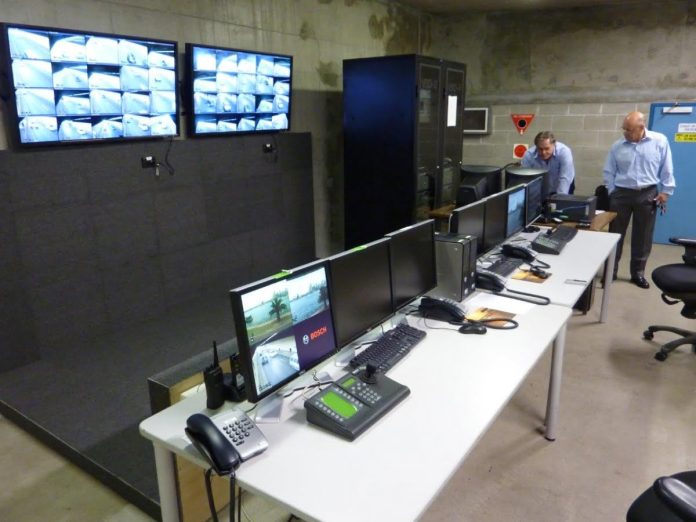Alarm monitoring, which has been drifting away from standalone controllers to networked hubs for many years, is now perfectly positioned for the rapid penetration into its functionality of analytics suites.
There’s no question that residential and small business alarm technology has changed. The alarm system is increasingly a hub, often integrated into the primary keypad and always connected to a cabled network, as well as reporting to professional monitoring services via redundant mobile wireless. The latest systems of this type are all addressable by users via an app, and monitoring and reporting functionalities continue to evolve in real time at a cadence that matches more closely that of the IT industry than electronic security manufacturing of yore.
The switch to hub-based systems hasn’t only given users much more control over their systems – in some cases, it’s giving them more information than is available to the operators of monitoring stations, which are restricted by the parameters of alarm monitoring software. For the latest generation of alarm system manufacturers, no such constraints exist and instead there’s considerable pressure to out-compete the latest software developments of the designers next door.
This turbo-charged evolution of alarm system software is going to offer home and small business owners, and monitoring stations, something they’ve never had before. And that something is analytics. Analytics solutions, whether based on NO/NC sensor inputs or video streams, have been around for a while, but their ubiquity, their rapid evolution, their capability to identify faces, to crunch event data, to react to variations and thresholds tailored to sites, and to be tweaked by enterprising monitoring providers and integrators in open APIs is what will take alarm monitoring to another level altogether.
Something that’s long been an issue for monitoring stations is that video verification of alarm events depends to some extent on getting video streams from a monitored premises to an operator’s workstation for consideration in real time. Because of its complexities, video verification has for many years been a specialised service – it’s been expensive and for monitoring stations it’s comparatively high touch. But the latest analytics solutions can change all that – in particular that killer application – face recognition.
The beauty of face recognition as a tool for reporting alarm events is that once all a business or family’s faces are programmed into the system, any unknown person who appears onsite while the system is in alarm will trigger an intrusion event, period. At the same time, this face will be recorded, allowing the intruder’s identity to be delivered to monitoring stations and end users. There’s no need to fill the site with cameras to achieve this – just 1 or 2 cameras covering a secure external approach, an internal foyer and a key internal thoroughfare will be more than enough.
Importantly, such cameras don’t need to record or transmit real time image streams on or offsite – all they need do is recognise and notify users and monitoring station operators when they detect unknown faces. It should be pointed out that if intruders cover their faces, ID will not be possible, but masked faces would still represent a variation that could trigger an alert.
Face recognition is not the only area where analytics can inform system owners and monitoring providers. Event data can be assessed in clever ways that would allow a system to notice patterns of events from intrusion sensors, smoke or flood sensors and reeds on doors and windows. A particular strength of the latest solutions is that they have the ability to instantly inform users about operational events – this includes when staff arrive or leave a location, current system state, as well as offering an overview of the entire solution and everything connected to it.
Hand in hand with more data crunched by increasingly clever analytics is the evolution of better reporting, which informs site management of events, trends, issues, gaps in coverage and plenty more. Automation of reporting is a key development in the future of operational software and competition between providers will only make this functionality more useful and easier to access.
In SEN’s opinion, monitoring stations’ role as a vital 24-hour intermediary between systems and emergency services means they will always be relevant, but analytics has the capacity to make their services more capable still as well as providing customisable hooks for integrators.
While there’s a pessimistic view of alarm monitoring which holds that software developments will make professional monitoring redundant, that’s far from the truth. The capacity for site-by-site customisation of clever alarm and automation solutions, as well as orchestrating law enforcement response and creation and management of investigative reports is considerable. And home and business owners have never been more bombarded with mountains of distracting information – manual assessment of alarm events 24/7 is not something they need to agonise about.
There’s a question hovering in the background here and it concerns false alarms, which a recent US report suggested constituted 95 per cent of all alarms generated. This is a huge number that erodes the value of alarm systems in the eyes of end users and law enforcement responders. Does analytics offer a way to eliminate false alarm almost completely? It certainly does and the chances software providers will not seize on this capability with both hands is zero.
Whether systems re-categorise false alarms caused by known faces, or make clever assessments of groups of activations, or take into account circumstances like adjacent thunderstorms, there’s a huge opportunity for installers, integrators and their technology partners to take alarm monitoring to a level we’ve never seen before and that makes its future very exciting, indeed.
#securityelectronicsandnetworks.com









